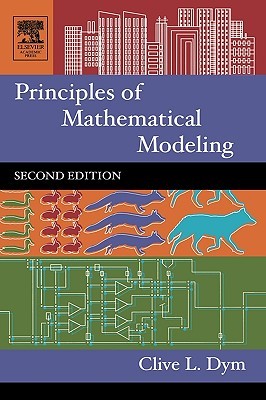
- We will send in 10–14 business days.
- Author: Clive Dym
- Publisher: Academic Press
- ISBN-10: 0122265513
- ISBN-13: 9780122265518
- Format: 16.2 x 23.4 x 1.7 cm, kieti viršeliai
- Language: English
- SAVE -10% with code: EXTRA
Reviews
Description
Science and engineering students depend heavily on concepts of mathematical modeling. In an age where almost everything is done on a computer, author Clive Dym believes that students need to understand and "own" the underlying mathematics that computers are doing on their behalf. His goal for Principles of Mathematical Modeling, Second Edition, is to engage the student reader in developing a foundational understanding of the subject that will serve them well into their careers.
The first half of the book begins with a clearly defined set of modeling principles, and then introduces a set of foundational tools including dimensional analysis, scaling techniques, and approximation and validation techniques. The second half demonstrates the latest applications for these tools to a broad variety of subjects, including exponential growth and decay in fields ranging from biology to economics, traffic flow, free and forced vibration of mechanical and other systems, and optimization problems in biology, structures, and social decision making.
Prospective students should have already completed courses in elementary algebra, trigonometry, and first-year calculus and have some familiarity with differential equations and basic physics.
EXTRA 10 % discount with code: EXTRA
The promotion ends in 21d.12:08:19
The discount code is valid when purchasing from 10 €. Discounts do not stack.
- Author: Clive Dym
- Publisher: Academic Press
- ISBN-10: 0122265513
- ISBN-13: 9780122265518
- Format: 16.2 x 23.4 x 1.7 cm, kieti viršeliai
- Language: English English
Science and engineering students depend heavily on concepts of mathematical modeling. In an age where almost everything is done on a computer, author Clive Dym believes that students need to understand and "own" the underlying mathematics that computers are doing on their behalf. His goal for Principles of Mathematical Modeling, Second Edition, is to engage the student reader in developing a foundational understanding of the subject that will serve them well into their careers.
The first half of the book begins with a clearly defined set of modeling principles, and then introduces a set of foundational tools including dimensional analysis, scaling techniques, and approximation and validation techniques. The second half demonstrates the latest applications for these tools to a broad variety of subjects, including exponential growth and decay in fields ranging from biology to economics, traffic flow, free and forced vibration of mechanical and other systems, and optimization problems in biology, structures, and social decision making.
Prospective students should have already completed courses in elementary algebra, trigonometry, and first-year calculus and have some familiarity with differential equations and basic physics.


Reviews